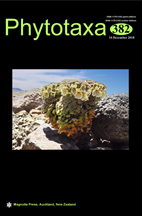Abstract
Aspergillus section Terrei isolates deposited in the China General Microbiological Culture Collection Centre (CGMCC), Institute of Microbiology, were evaluated using morphological and molecular approaches. Based on phylogenetic analyses of nuclear ribosomal internal transcribed spacer (ITS), beta-tubulin (BenA), and calmodulin (CaM) genes sequences, these isolates were identified as Aspergillus terreus, A. floccosus, A. niveus, A. pseudoterreus, A. allahabadii, and A. alabamensis. The last two were new records from China. The phylogenetic variation and morphological description of A. allahabadii and A. alabamensis are given. Morphologically, most section Terrei members are indistinguishable. The phylogenetic relationships of 16 species of section Terrei showed that the CaM and BenA loci could be used to distinguish section Terrei members. This is the first study to summarize section Terrei species with the new taxonomic criteria of Aspergillus in China.

